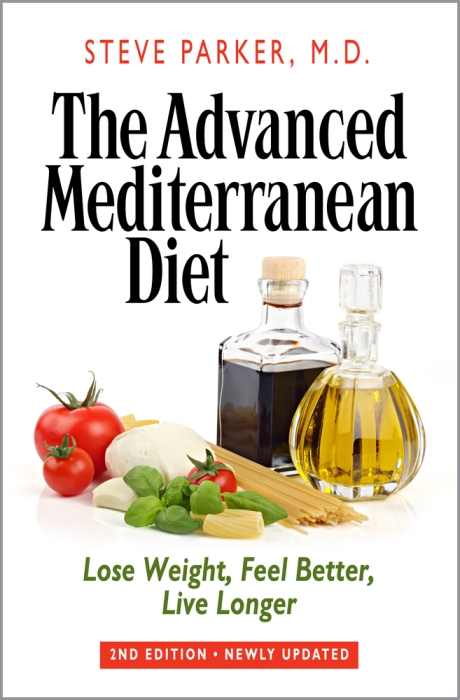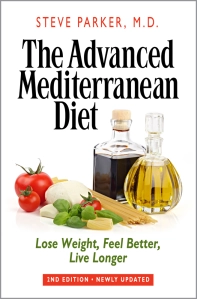The Mediterranean diet preserves heart muscle performance and reduces future heart disease events, according to Greek researchers reporting in the American Journal of Clinical Nutrition, May 19, 2010.
Reuters and other news services have covered the story.
The Mediterranean diet is well-established as an eating pattern that reduces the risk of death or illness related to cardiovascular disease—mostly heart attacks and strokes. Most of the studies in support of the heart-healthy diet looked at development of disease in general populations. The study at hand examined whether the diet had any effect on patients with known heart disease, which has not been studied much.
![MPj04051240000[1]](https://diabeticmediterraneandiet.files.wordpress.com/2010/06/mpj0405124000011.jpg?w=200&h=300) How Was the Study Done?
How Was the Study Done?
The study population was 1,000 consecutive patients admitted with heart disease to a Greek hospital between 2006 and 2009. In this context, heart disease refers to a first or recurrent heart attack (70-80% of participants) or unstable angina pectoris. Acute heart attacks and unstable angina are “acute coronary syndromes.” Average age was 64. Sixty percent had a prior diagnosis of cardiovascular disease (coronary heart disease or stroke). Thirty percent had diabetes. At the time of hospitalization, half had diminished function of the main heart pumping chamber (the left ventricle), half had normal pump function. Men totalled 788; women 212.
On the third hospital day, participants were given a 75-item food frequency questionnaire asking about consumption over the prior year. If a potential enrollee died in the first two hospital days, he was not included in the study. A Mediterranean diet score was calculated to determine adherence to the Mediterranean diet. Mediterranean diet items were nonrefined cereals and products, fruits, nuts, vegetables, potatoes, dairy products, fish and seafood, poultry, red meats and meat products, olive oil, and alcohol.
Left ventricle function was determined by echocardiogram (ultrasound) at the time of study entry, at the time of hospital discharge, and three months after discharge. Systolic dysfunction was defined as an ejection fraction of under 40%. [Normal is 65%: when the left ventricle is full of blood, and then squeezes on that blood to pump it into the aorta, 65% of the blood squirts out.]
Participants were then divided into two groups: preserved (normal) systolic left ventricular function, or diminished left ventricular function.
They were followed over the next two years, with attention to cardiovascular disease events (not clearly defined in the article, but I assume including heart attacks, strokes, unstable angina, coronary revascularization, heart failure, arrhythmia, and death from heart disease or stroke.
Results
- Four percent of participants died during the initial hospitalization.
- At the three month follow-up visit, those with greater adherence to the Mediterranean diet (a high Mediterranean diet score) had higher left ventricular performance (P=0.02).
- At the time of hospital admission, higher ejection fractions were associated with greater adherence to the Mediterranean diet (P<0.001).
- Those who developed diminished left ventricular dysfunction had a lower Mediterranean diet score (P<0.001)
- During the hospital stay, those in the highest third of Mediterranean diet score had lower in-hospital deaths (compared with the lower third scores) (P=0.009).
- Among those who survived the initial hospitalization, there was no differences in fatal cardiovascular outcomes based on Mediterranean diet score.
- Food-specific analysis tended to favor better cardiovascular health (at two-year follow-up) for those with higher “vegetable and salad” and nut consumption. No significant effect was found for other components of the Mediterranean diet score.
- Of those in the highest third of Mediterranean adherence, 75% had avoided additional fatal and nonfatal cardiovasclar disease events as measured at two years. Of those in the lowest third of Mediterranean diet score, only 53% avoided additional cardiovascular disease events.
The Authors’ Conclusion
Greater adherence to the Mediterranean diet seems to preserve left ventricular systolic function and is associated with better long-term prognosis of patients who have had an acute coronary syndrome.
My Comments
I agree with the authors’ conclusion.
We’re assuming these patients didn’t change their way of eating after the initial hospitalization. We don’t know that. No information is given regarding dietary instruction of these patients while they were hospitalized. In the U.S., such instruction is usually given, and it varies quite a bit.
In this study, lower risk of cardiovascular death was linked to the Mediterranean diet only during the initial hospital stay. Most experts on the Mediterranean diet would have predicted lower cardiovascular death rates over the subsequent two years. Mysteriously, the authors don’t bother to discuss this finding.
For those who don’t enjoy red wine or other alcoholic beverages, this study suggests that the Mediterranean diet may be just as heart-healthy without alcohol. A 2009 study by Trichopoulou et al suggests otherwise.
Steve Parker, M.D.
Reference:
Chrysohoou, C., Panagiotakos, D., Aggelopoulos, P., Kastorini, C., Kehagia, I., Pitsavos, C., & Stefanadis, C. (2010). The Mediterranean diet contributes to the preservation of left ventricular systolic function and to the long-term favorable prognosis of patients who have had an acute coronary event American Journal of Clinical Nutrition DOI: 10.3945/ajcn.2009.28982



![MPj04051240000[1]](https://diabeticmediterraneandiet.files.wordpress.com/2010/06/mpj0405124000011.jpg?w=200&h=300)

